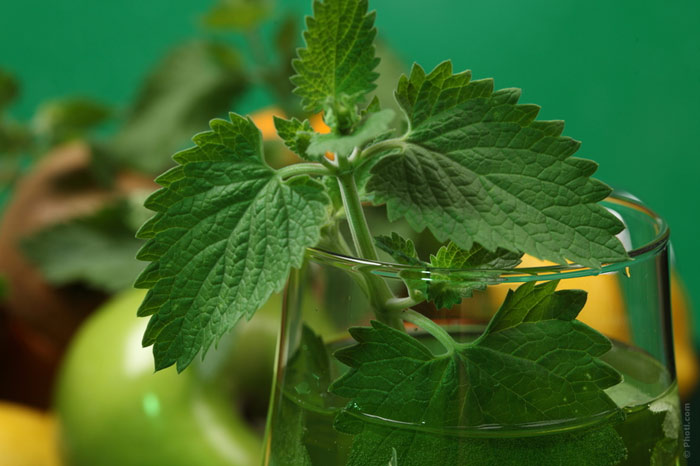Doctors say that only seasonal foods can really benefit your health. It is very useful to eat seasonal foods in May: there is much tasty and extremely useful greenery at this time. Have a look at these 10 most important foods of the season – and add them to your diet.

1. Fresh Mint
The season of fresh mint begins in May. It is useful for those who suffer from gastrointestinal problems. Mint improves digestion, reduces acidity and soothes the stomach lining. Mint is recommended to people suffering from insomnia. If you are tired at work, leave a bunch of mint in a vase in the kitchen. Inhaling the mint aroma, you will restore your body’s energy!
2. Radish
Mustard oils give radish a slightly bitter taste; they also supply the vegetable with antiseptic properties. Radish has a beneficial effect on digestion, increases appetite and has a mild laxative effect. There is a lot of vitamin C in radish, especially in tubers that have pinkish flesh. The vegetable also contains vitamin B, vitamin PP and minerals: sodium, phosphorus, potassium, calcium, and most of all – iron.
Radish is contraindicated to people with diseases of the gastrointestinal tract, as well as liver and kidney problems.
3. Dandelions
Young dandelion leaves, roots, and fluffy flowers – everything can be eaten. Dandelion contains vitamins C, A, B2, E, PP, choline, salts of manganese, iron, calcium, phosphorous, up to 5% protein. It improves the functioning of the gastrointestinal tract, normalizes metabolism and has a beneficial effect on the body. Dandelion is high in potassium and antioxidants. This is a natural analgesic and anti-viral agent.
4. Young green peas
Those who want to have healthy skin in the spring should include green peas into the diet. The fact is that it slows down the aging process, as well reduces the chances of getting a heart attack and cancer.
5. Sorrel
Sorrel will be gathered during the summer, but in May its nutrients are best absorbed by the body. Sorrel leaves contain considerable amounts of carotene, vitamins D, K, ascorbic acid, oxalic acid, tannins, calcium, potassium, magnesium, and iron. It can help with angina, sore throat, colitis, enterocolitis, and other diseases of the gastrointestinal tract, as well as anemia and low back pain.
6. Young nettles
Despite its reputation as a weed, nettle is very useful. It contains large amounts of vitamin C, vitamins K, B2, B6, beta carotene (more than in carrots) , chlorophyll, glycosides, tannins, proteins and mineral salts (iron, calcium, silicon, magnesium). Nettle helps with avitaminosis, supports the immune system, and improves mood. It also has a beneficial effect on digestion and on the pancreas, leading to normal metabolism.
However, it increases the tone of the uterus; therefore, it is contraindicated to pregnant women. You also mustn’t eat nettles if you suffer from thrombosis and various blood diseases, as nettle thickens blood.
7. Young Cabbage
Young cabbage contains huge amount of vitamins and minerals (vitamin C, H, PP, B3, B2, B1, E and carotene, provitamin D group, vegetable protein, calcium, potassium, phosphorus). Moreover, it has more vitamin C than tangerines and lemons do. Young cabbage also contains tartronic acid slowing the accumulation of fatty deposits. Cabbage stimulates blood function, improves the thyroid gland function. Large amount of fiber contained in cabbage has beneficial effects on bowel activity, removes harmful cholesterol.
8. Asparagus
Asparagus contains a large amount of protein, fiber, vitamins A, B, C, T, K, copper, manganese, dietary fiber, magnesium, carotene, coumarin, thiamine, and folic acid. And that’s not the whole list. Thanks to this composition, asparagus charges us with energy, elevates mood, and relieves symptoms of avitaminosis. It has a beneficial effect on the heart and blood vessels, regulates blood clotting. Carotene contained in asparagus prevents cancer.
9. Young Potatoes
This product contains powerful antioxidants that help to preserve youthfulness. Potatoes are useful because most of the vitamins are close to the skin layer, which you do not need to peel, just scrub a little.
10. Lettuce
Lettuce contains many vitamins, the most essential of which are vitamin A, B1, B2, B5, B9, C, E, H, PP. There are also sodium, magnesium, calcium, phosphorus and other microelements in the lettuce. It also contains trace elements – iron, iodine, copper, zinc, chromium, fluoride, and others. Lettuce is rich in folic acid, which helps to maintain human mental functions. Therefore, little children and elderly people are especially recommended to eat lettuce. Lettuce juice is used to treat stomach ulcers, gastritis, and duodenal ulcer. It contains lactucin and other trace elements, which have a sedative effect.










